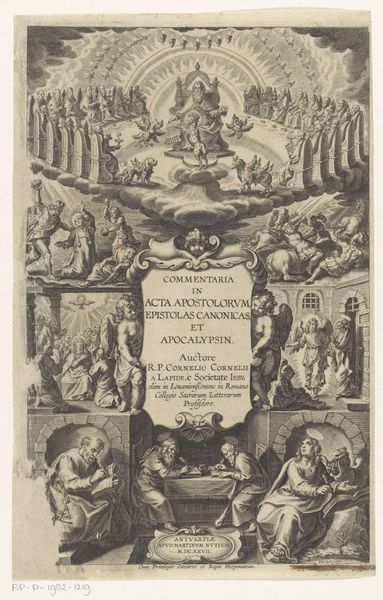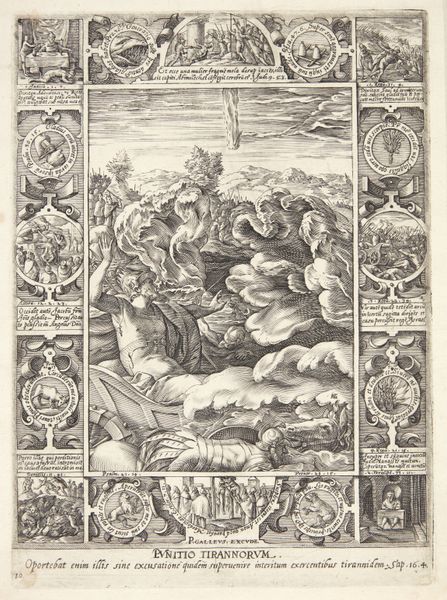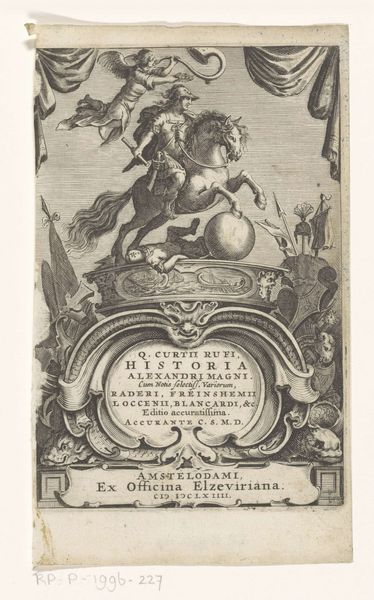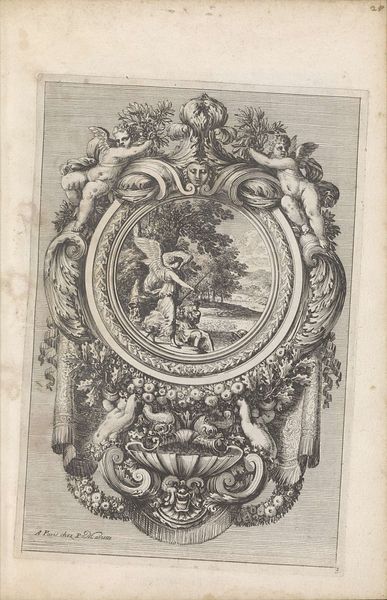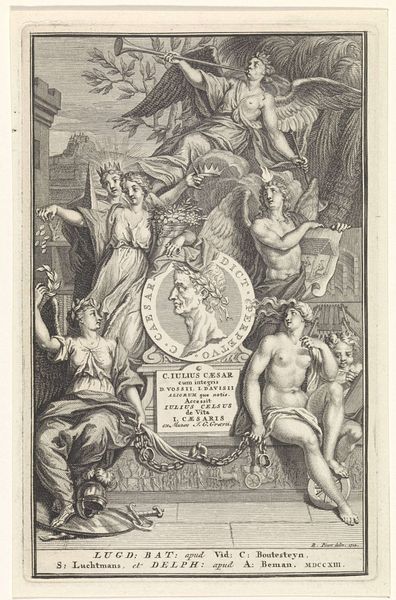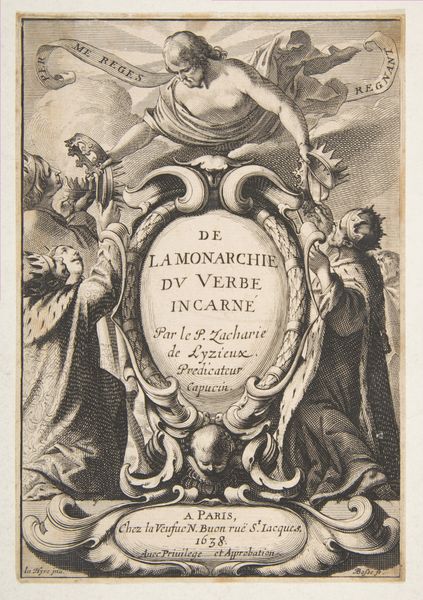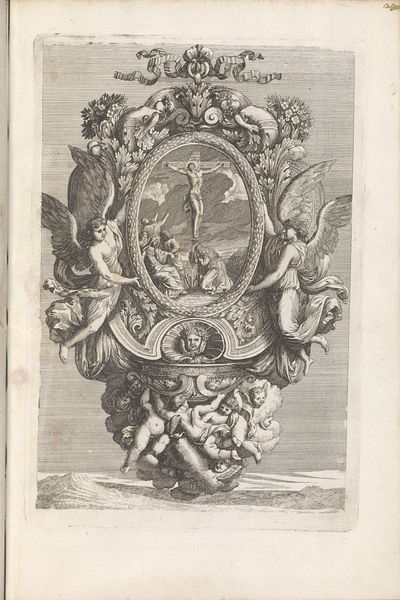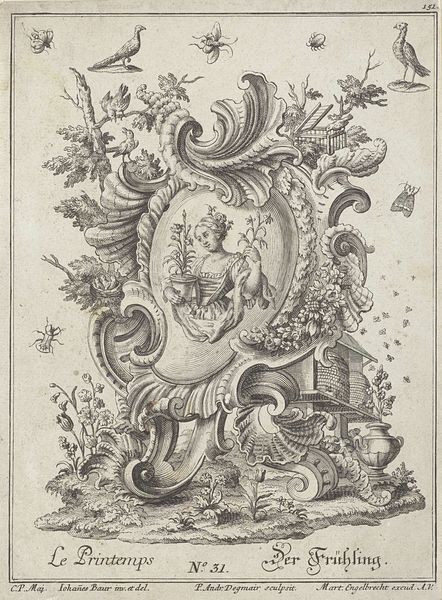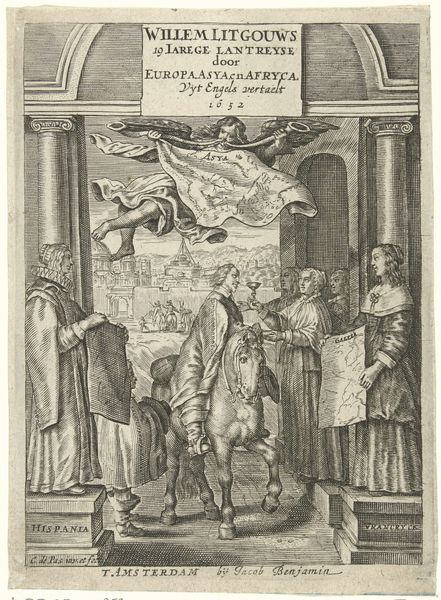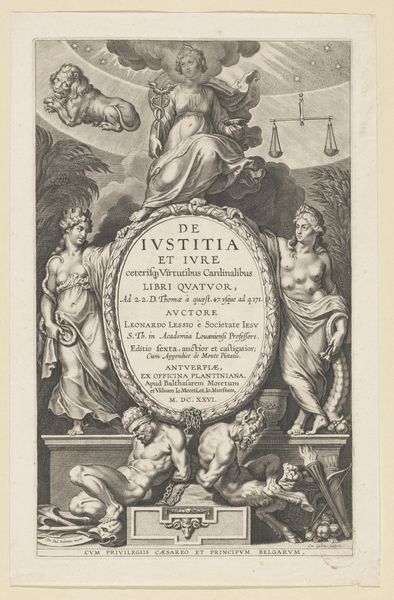
print, engraving
#
allegory
#
baroque
#
pen drawing
# print
#
pen illustration
#
old engraving style
#
highly detailed
#
pen work
#
history-painting
#
engraving
Dimensions: height 297 mm, width 181 mm
Copyright: Rijks Museum: Open Domain
Curator: Look at the stunning detail in this 1657 engraving by Matthäus Merian the Younger, currently housed in the Rijksmuseum. It's the title page for Johannes Jonstonus's "Historiae Naturalis de Avibus Libri VI"—a book about birds. Editor: My first impression is how Baroque it is; so opulent and densely packed! The artist really used the entire surface to build out that swirling drama. Curator: The technique is exquisite. The intricacy of the pen work truly elevates this to something more than just a functional piece; there is a real artistry in the execution. It speaks to a vibrant printmaking industry at the time, doesn't it? One geared towards scientific dissemination. Editor: Absolutely. Formally, I am struck by how Merian balances the weight of the allegorical figure at the top with the ornate cartouche in the center, framing the book’s title and author. Note also how all of the elements are visually linked; see how the gazes of the various creatures lead your eye through the image? Curator: And how are we meant to view that labor? The engraving, after all, makes knowledge about birds available to a wider, literate public. What did this expanded knowledge then offer back to early modern society and culture? This wasn't just art for art’s sake, there was an intrinsic commercial aspect. Editor: True, but observe also the ship on the sea. Note its positioning at the base. It grounds the fantasy and highlights trade and exploration. Visually, it anchors the upper allegorical register to a lived human experience, that is, a human enterprise with its own forms and needs. Curator: It makes you wonder what kind of workshop Merian maintained. There were probably apprentices involved in some of the labor; the labor for the engraving certainly reflects this hierarchy. Editor: You are right, the print is not simply about ornithology, it encapsulates a specific period’s mode of viewing the natural world, one infused with religion and symbolism—the stars crowning the central figure, the cherubs. These touches point to meaning that transcends pure visual depiction. Curator: I'll never think of these Baroque title pages the same way again; that detailed, intricate execution speaks volumes. Editor: Indeed, examining how visual elements shape and are shaped by historical contexts certainly enriches our viewing experience.
Comments
No comments
Be the first to comment and join the conversation on the ultimate creative platform.

